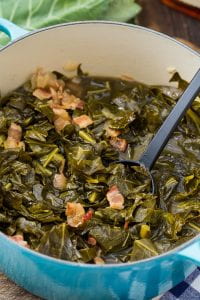(Photo Credits: https://realhousemoms.com/hush-puppies/)
The crunchy, fried exterior, mixed with the soft bread-like interior is a perfect combination. One bite and you cannot stop. If it’s your first time eating it, it’s hard to tell what it is. Is it cornbread or corn muffin? But no, it’s better; it is a hushpuppy. For many people, hushpuppies are reminders of their southern roots and are a source of extreme nostalgia. That first bite into a warm hushpuppy, along with some butter, will make anyone fall in love with this delectable food.
Hushpuppies are a unique food that is commonly found in the south. It is a deep fried ball of cornbread which is served with all sorts of condiments, like butter or even barbeque sauce. Depending on where you go, hushpuppies could be shaped like an oval or spherical; either way, they still taste the same. One of the most interesting variations of hushpuppies I’ve had was a conch hushpuppy at a restaurant in Richmond. It had conch, a type of seafood, inside of it, so it was a lot chewier than other hushpuppies I have eaten. It was not my favorite just because the texture was off, and I couldn’t enjoy the softness it normally is like. My personal favorite was a jalapeno hushpuppy at a seafood restaurant at Kiawah Island. The jalapenos add a nice tang to it, and I had never tried something like it. For me, hushpuppies scream southern food because it is a mix of two popular dishes: cornbread and fried food. It is something that when you bite into it, whether it be at a seafood or barbeque restaurant, it just makes you feel good. That is what southern cooking, and comfort food, is all about.
Hushpuppies have a fascinating history. Like a lot of popular southern food, it is difficult to trace its origins back to one specific place. Most foods like this, like pralines, were influenced by a lot of cultures. An interesting story about the derivation of the name hushpuppy is that soldiers and fishermen would feed these to their dogs to quiet them. Hence the name hushpuppy.
https://whatscookingamerica.net/Bread/Hushpuppies.htm; Accessed 10/24/2020
https://www.southernliving.com/side-dishes/what-is-a-hushpuppy; Accessed 10/24/2020




/chicken-bog-recipe-4690802-final-db23b0e1bd534dd0b291cffedaa4fba2.jpg)









